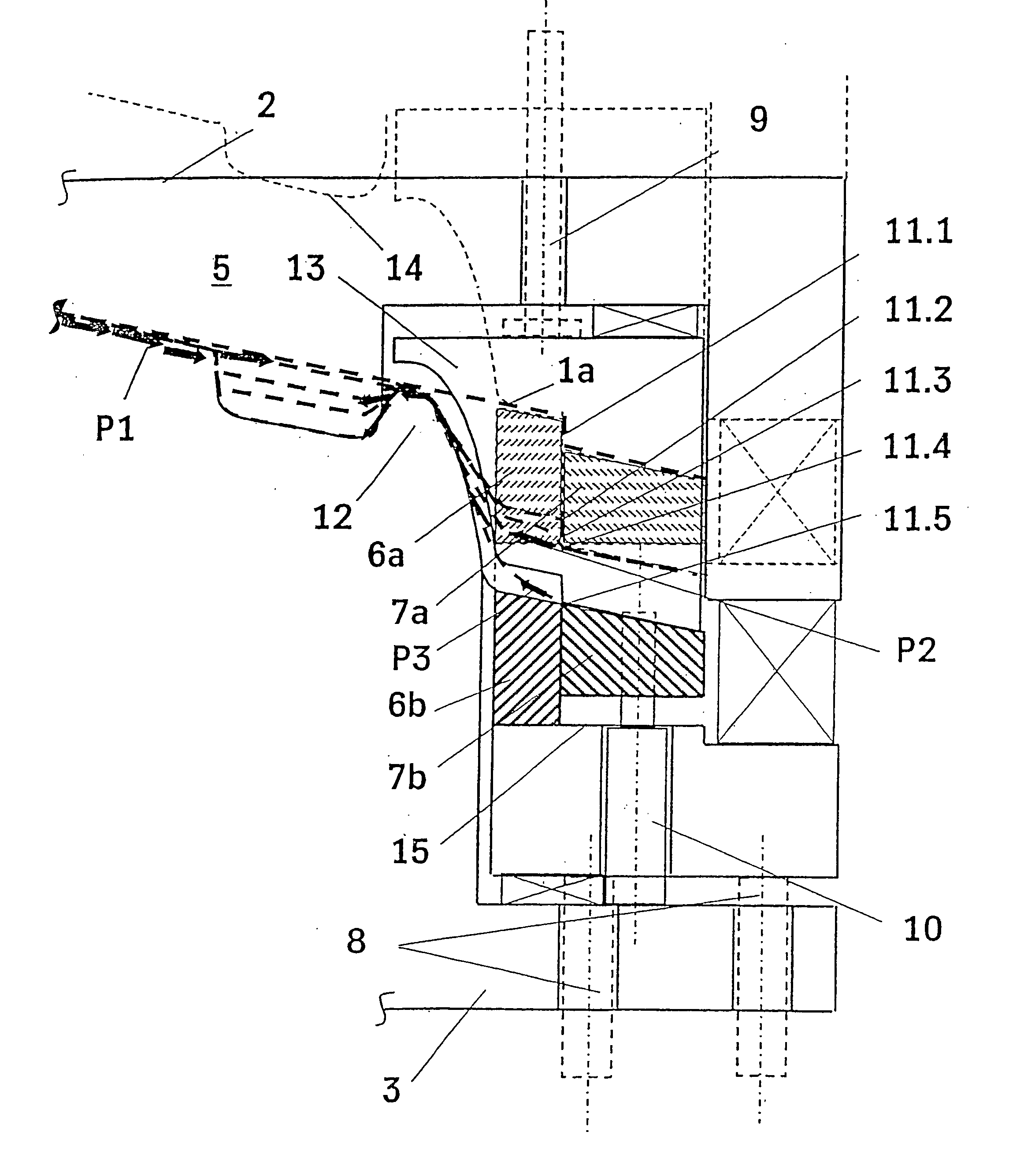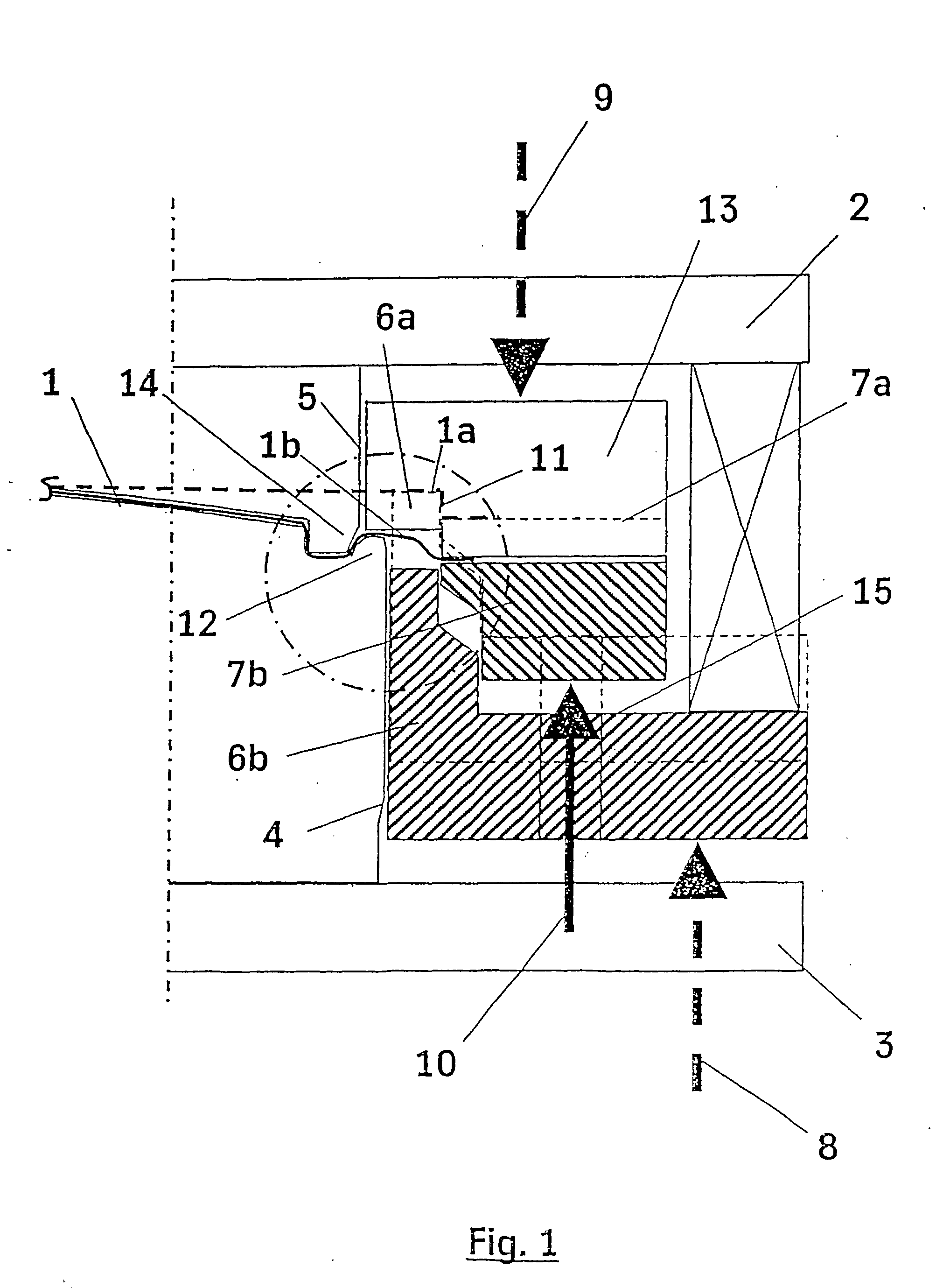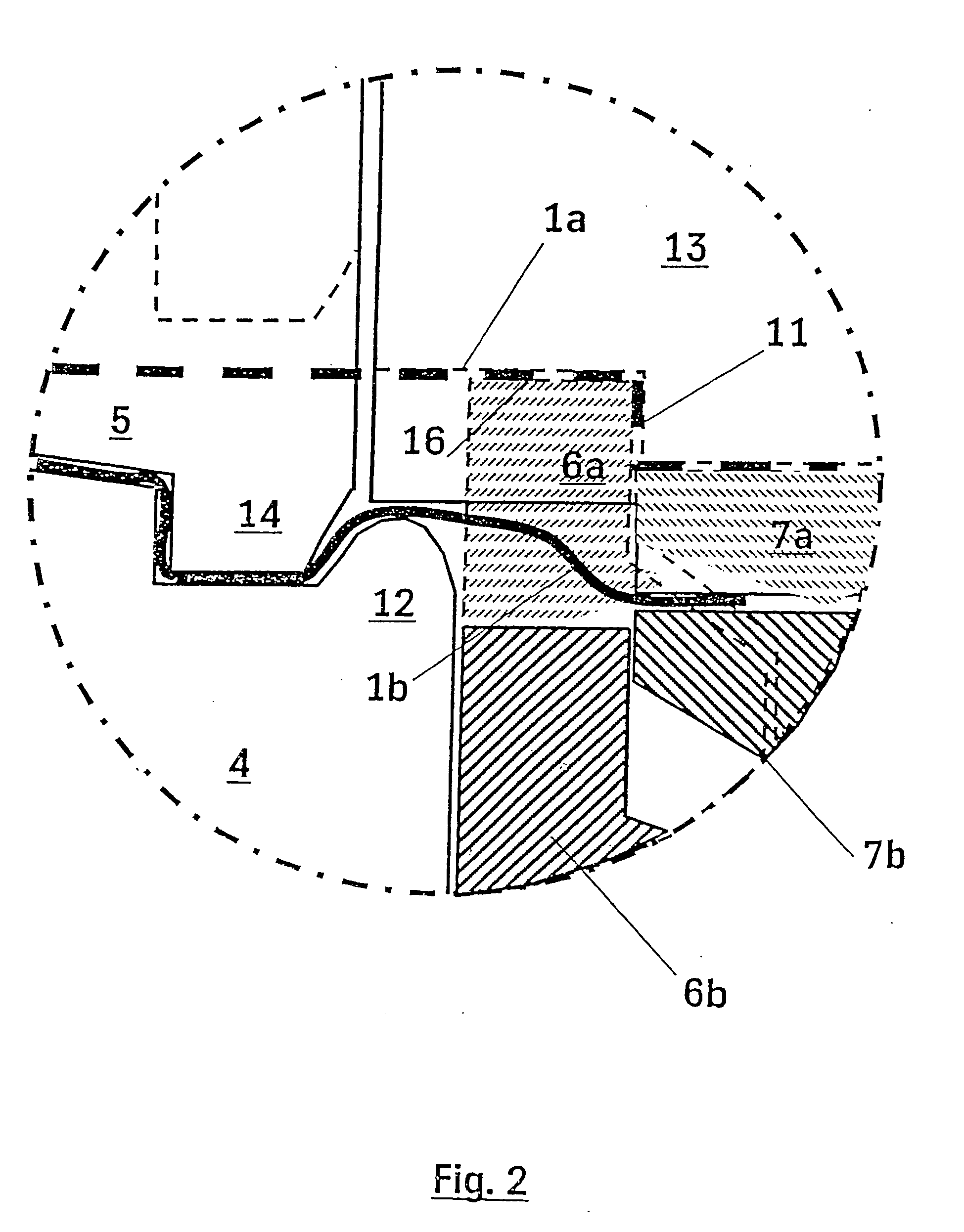Method for controlling the material flow during the deep-drawings of sheet metal, and deep-drawing tool
a technology of sheet metal and deep-drawing tools, which is applied in the field of controlling the material flow during the deep-drawing of sheet metal, can solve the problems of relative high height adjustment, relatively complicated solution, and high cost, and achieve the effect of increasing the impedance of sheet metal plate from outside and reducing the amount of breaking elongation
- Summary
- Abstract
- Description
- Claims
- Application Information
AI Technical Summary
Benefits of technology
Problems solved by technology
Method used
Image
Examples
Embodiment Construction
[0019] Referring to the drawings in particular, FIG. 1 shows the sheet metal plate 1 prior to the deep-drawing process with the sheet metal plate edge 1a as a dashed line with blocking step 11. After the deep-drawing process, the sheet metal plate edge 1b is drawn with a continuous line. Sheet metal plate 1 is located between the deep-drawing stamp 4 and matrix 5 that are arranged between top plate 2 and base plate 3 of a conventional press. In a conventional manner, base plate 3 is fixed in stationary arrangement, while top plate 2 is vertically movable for the deep-drawing process. At its underside, the upper sheet metal stopper 13, which is movable relative to a die plate or matrix 5 possesses a step 16 that corresponds to the blocking step 11 of the sheet metal edge 1a. During the deep-drawing process, the upper sheet metal stopper 13 is loaded by spring load 9, also designated as top pneumatic force, and pressed against the sheet metal edge. The two lower sheet metal stoppers 6...
PUM
| Property | Measurement | Unit |
|---|---|---|
| height | aaaaa | aaaaa |
| strength | aaaaa | aaaaa |
| step height | aaaaa | aaaaa |
Abstract
Description
Claims
Application Information
 Login to View More
Login to View More - R&D
- Intellectual Property
- Life Sciences
- Materials
- Tech Scout
- Unparalleled Data Quality
- Higher Quality Content
- 60% Fewer Hallucinations
Browse by: Latest US Patents, China's latest patents, Technical Efficacy Thesaurus, Application Domain, Technology Topic, Popular Technical Reports.
© 2025 PatSnap. All rights reserved.Legal|Privacy policy|Modern Slavery Act Transparency Statement|Sitemap|About US| Contact US: help@patsnap.com



